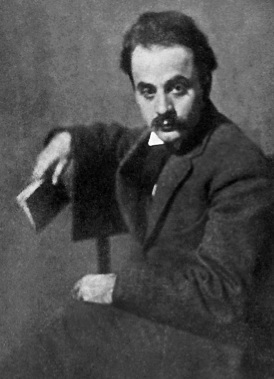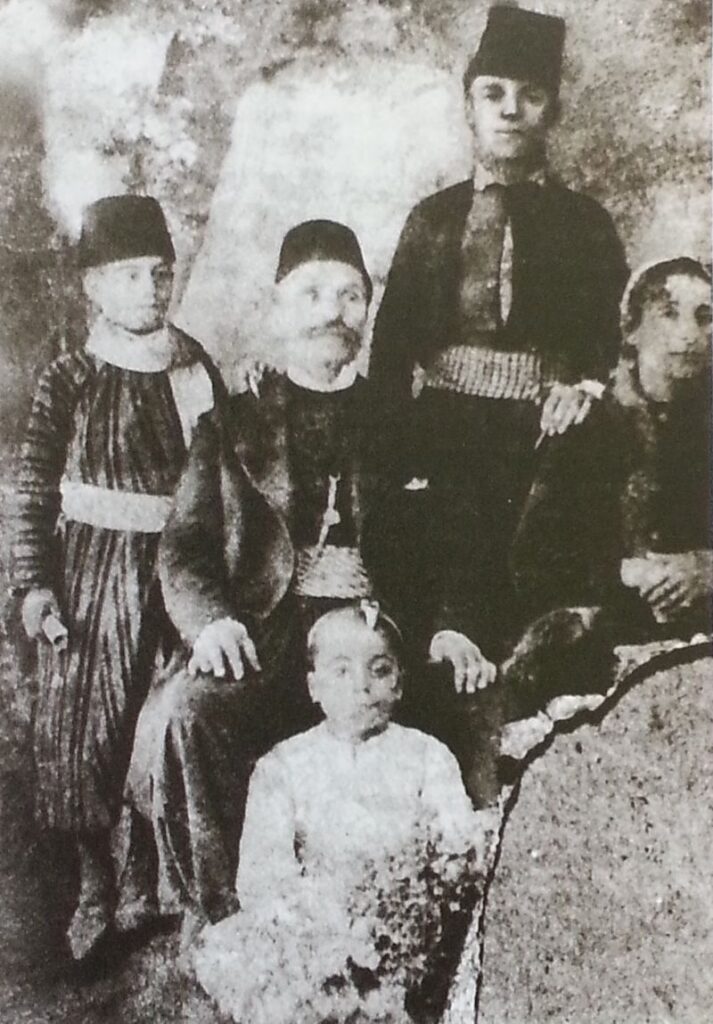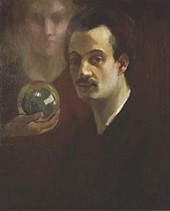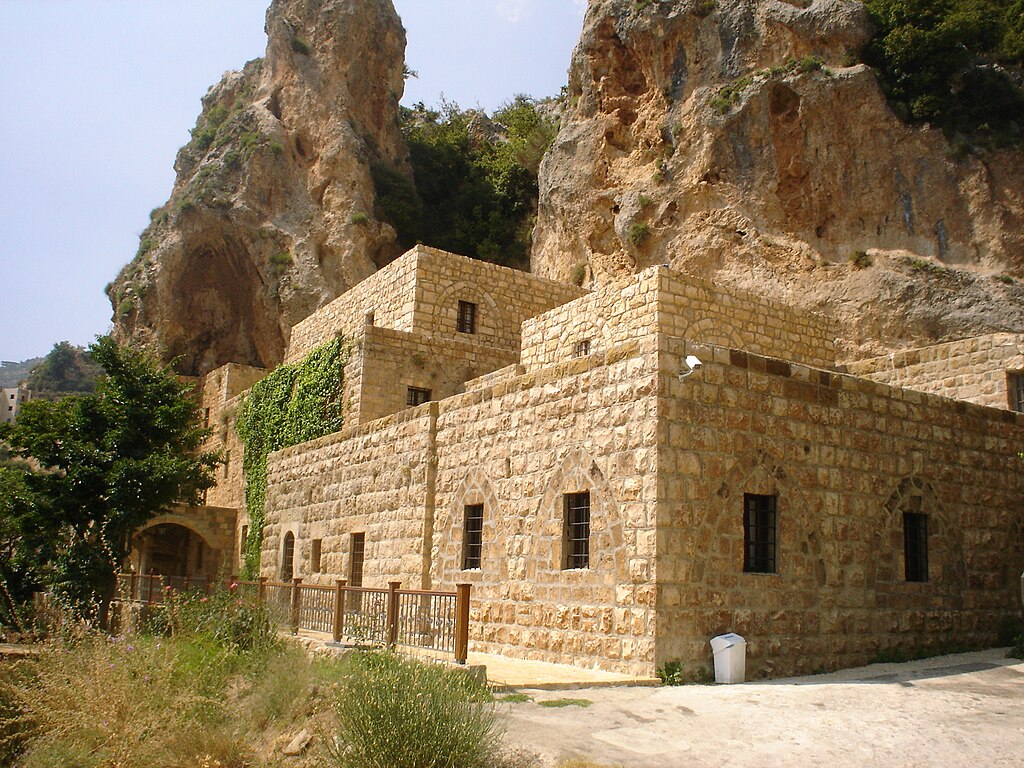Pathbreakers of Arab America: Kahlil Gibran

By: John Mason / Arab America Contributing Writer
This is the twenty-first in Arab America’s series on American pathbreakers of Arab descent. The series includes personalities from entertainment, business, sports, science, academia, journalism, and politics, among other areas. Our twenty-first pathbreaker is Kahlil Gibran, born in Bsharri village of Ottoman-ruled Mount Lebanon in 1893. In time, Gibran became a well-known Lebanese-American writer, poet, visual artist, and philosopher, most recognized as the author of The Prophet. First published in the U.S. in 1923, The Prophet is one of the best-selling books of all time and is translated into more than 100 languages. When it sold its millionth copy in 1957, it was sometimes referred to as the “bible” of the counterculture. The Prophet is deeply spiritual, and poetic, and contains a message of peace, of which the World, especially the Middle East and Ukraine, is in such dire need.
Kahlil Gibran, Lebanese-born American writer, poet, artist, and philosopher—a genius of his time (and ours, too)
Gibran Kahlil Gibran (Arabic: جُبْرَان خَلِيل جُبْرَان) was born in Bsharri village of Ottoman-ruled Mount Lebanon on January 6, 1883. He is mostly referred to by the English version of his name, Kahlil Gibran. His father, Khalil Sa’ad Gibran, and mother, Kamila Rahmeh, were Maronite Christians. His mother was the daughter of a priest. He immigrated with his mother and siblings to the United States in 1895. They lived in South Boston, then a stronghold of Syrian-Lebanese families. Gibran’s mother worked as a seamstress, while Khalil went to school in Boston. Recognizing his artistic talent, his family sent him back at age 15 to Lebanon to study at the Collège de la Sagesse in Beirut.
Gibran returned to Boston in 1902, once he’d heard of a family death, which was followed by more deaths the following year, including his mother’s. He relied on a sister’s income from her seamstress job, a time when his artwork became better known. His drawings were first displayed in New York in 1904 and his first book, in Arabic, was published in 1905. His talent attracted benefactors, who supported his work throughout his life. Gibran studied art in Paris from 1908 to 1910, compliments of a benefactor. Returning to New York in 1911, he began writing books in English, the first of which, The Madman, was published in 1918 by Knopf. It was during that same period that Gibran began writing The Prophet.

Gibran was a prolific writer and artist, producing so many drawings and writings that it is not feasible to name all or even most of them here. According to Wikipedia, “By the time of his death at the age of 48 from cirrhosis and incipient tuberculosis in one lung, he had achieved literary fame on both sides of the Atlantic Ocean, and The Prophet had already been translated into German and French.
His body was moved to his birth village of Bsharri, to which he had bequeathed all future royalties on his books, and where a museum dedicated to his works now stands. All future American royalties to his books were willed to his hometown of Bsharri, to be used for civic betterment. Nearly 100 original works of Gibran’s art were donated by a benefactor to the Telfair Museum of Art in Savannah, Georgia.
A man ahead of his time, Gibran is more relevant now than ever in this time of global trauma
Gibran’s work, The Prophet, became especially well-known in America in the 1960s, in the context of a growing counterculture and followed by New Age movements. It remains popular today with a broader population and has never been out of print and has been translated into more than 100 languages. That makes it one of the top ten most translated books in history and one of the best-selling books of the twentieth century. Such world leaders as John F. Kennedy and Indira Gandhi were inspired by its words and popular artists including Elvis Presley, John Lennon, the Beatles, Johnny Cash, and David Bowie wove The Prophet into their work one way or another.

In a BBC remembrance of The Prophet, the BBC wondered why Gibran’s The Prophet is so loved. Its answer, quoted from Dr. Mohamed Salah Omri, lecturer in Modern Arabic literature at Oxford University, is: “It serves various occasions or big moments in one’s life so it tends to be a book that is often gifted to a lover, or for a birth, or death. That is why it has spread so widely and by word of mouth.” Furthermore, in another quote, “This book has a way of speaking to people at different stages in their lives. It has this magical quality, the more you read it the more you come to understand the words,” said Reverend Laurie Sue, an interfaith minister in New York who has conducted hundreds of weddings with readings from The Prophet.
The Prophet is not based on dogma, religious or otherwise, thus appealing to anyone whether Jewish, Christian, or Muslim. This sentiment is reflected in a Gibran poem, “The Voice of the Poet”:
You are my brother and I love you. I love you when you prostrate
yourself in your mosque and kneel in your church and pray in your
synagogue. You and I are sons of one faith—the Spirit. And those that
are set up as heads over its many branches are as fingers on the hand
of a divinity that points to the Spirit’s perfection.
Kahlil Gibran
The Prophet has become so popular that some critics believe that as a universal piece of beloved wisdom, it is too good to be true. Gibran specialist, Dr. Juan Cole, in a book review, Book Riot, averred, that The Prophet‘s sale is both understandable and deserved, which are, of course, two quite different things. It is understandable first of all because the period in which it had flourished is one in search of reassurance and avid for answers to its perplexing questions about life… It contains that scarce commodity, wisdom.”

Gibran’s work possesses a universality, but it is known more by word-of-mouth than by the far-and-wide broadcasting of its merits. As Cole notes, “We all need answers to the existential questions, but we’re not supposed to be proud of it.”
In this period of Anti-Semitism and Islamophobia and the war between Hamas and Israel, Gibran as a Middle Easterner could play the role of spiritual mediator or culture broker. As Cole notes, “One can’t help but think that Gibran would have been both frustrated and unsurprised by the persistence of the problems we face today…but also that he’d be happy to contribute to our search for answers.”
Sources:
–”Kahlil Gibran,” Wikipedia Biography of Arab Americans,” 2023
–“Kahlil Gibran’s The Prophet: Why is it so loved?” BBC News, 5/12/2012
–“How Kahlil Gibran’s The Prophet became a quiet cultural powerhouse,” Book Riot (Dr. Juan Cole), 1/18/2022
John Mason, Ph.D, focuses on Arab culture, society, and history, and is the author of LEFT-HANDED IN AN ISLAMIC WORLD: An Anthropologist’s Journey into the Middle East, New Academia Publishing, 2017. He
John Mason, Ph.D, focuses on Arab culture, society, and history, is the author of LEFT-HANDED IN AN ISLAMIC WORLD: An Anthropologist’s Journey into the Middle East, New Academia Publishing, 2017. He has taught at the University of Libya, Benghazi, Rennselaer Polytechnic Institute in New York, and the American University in Cairo; John served with the United Nations in Tripoli, Libya, and consulted extensively on socioeconomic and political development for USAID and the World Bank in 65 countries.
The views and opinions expressed in this article are those of the author and do not necessarily reflect the position of Arab America.
Check out our Blog here!








